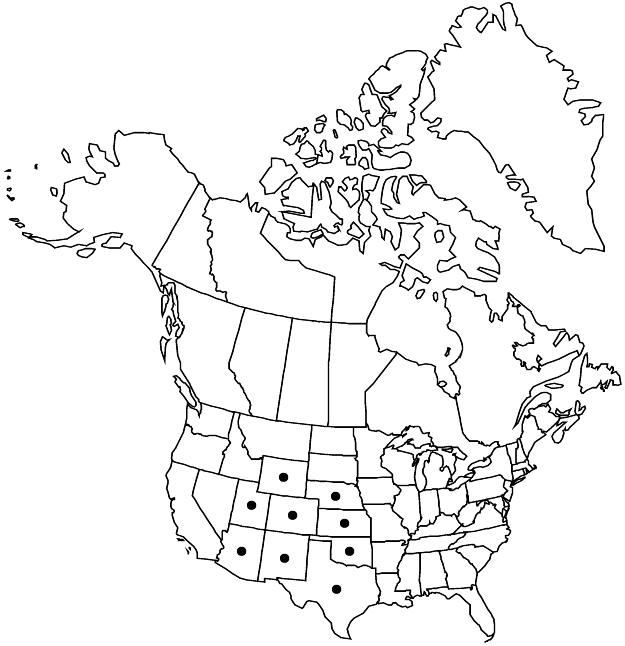Difference between revisions of "Eriogonum alatum"
in L. Sitgreaves, Rep. Exped. Zuni Colorado Rivers, 168, plate 8. 1853.
FNA>Volume Importer |
FNA>Volume Importer |
||
| Line 11: | Line 11: | ||
|name=Pterogonum alatum | |name=Pterogonum alatum | ||
|authority=(Torrey) H. Gross | |authority=(Torrey) H. Gross | ||
| + | |rank=species | ||
}} | }} | ||
|hierarchy=Polygonaceae;Polygonaceae subfam. Eriogonoideae;Eriogonum;Eriogonum subg. Pterogonum;Eriogonum alatum | |hierarchy=Polygonaceae;Polygonaceae subfam. Eriogonoideae;Eriogonum;Eriogonum subg. Pterogonum;Eriogonum alatum | ||
| Line 47: | Line 48: | ||
-->{{#Taxon: | -->{{#Taxon: | ||
name=Eriogonum alatum | name=Eriogonum alatum | ||
| − | |||
|authority=Torrey in L. Sitgreaves | |authority=Torrey in L. Sitgreaves | ||
|rank=species | |rank=species | ||
| Line 59: | Line 59: | ||
|publication year=1853 | |publication year=1853 | ||
|special status= | |special status= | ||
| − | |source xml=https://jpend@bitbucket.org/aafc-mbb/fna-data-curation.git/src/ | + | |source xml=https://jpend@bitbucket.org/aafc-mbb/fna-data-curation.git/src/f50eec43f223ca0e34566be0b046453a0960e173/coarse_grained_fna_xml/V5/V5_785.xml |
|subfamily=Polygonaceae subfam. Eriogonoideae | |subfamily=Polygonaceae subfam. Eriogonoideae | ||
|genus=Eriogonum | |genus=Eriogonum | ||
Revision as of 21:56, 16 December 2019
Herbs, monocarpic, 5–20(–25) dm, strigose or glabrous; taproot often chambered. Stems: caudex absent; aerial flowering stems usually 1, not fistulose, 2–13 dm, strigose or glabrous. Leaves basal and sometimes cauline; basal petiolate, petiole 2–6 cm, stigose to woolly or glabrous, blade linear-lanceolate or lanceolate to oblanceolate to spatulate, (3–)5–20 × 0.3–2 cm, strigose, becoming glabrous and green on both surfaces except for margins and midvein; cauline sessile, blade linear-oblanceolate to lanceolate, 1–9 × 0.3–0.8(–1) cm, similar to basal blade. Inflorescences 2–10 dm; branches strigose or glabrous; bracts semileaflike proximally, linear to linear-lanceolate, 2–9 × 1–3 mm, scalelike distally, triangular, 0.8–5 × 0.5–2 mm. Peduncles erect, straight or curving upward, 0.5–3.5 cm, strigose or glabrous. Involucres turbinate to campanulate, 2–4(–4.5) × 2–4(–4.5) mm, strigose or glabrous; teeth 1–1.8 mm. Flowers 1.5–2.5 mm in anthesis, 3–6 mm in fruit; perianth yellow to yellowish green, rarely maroon in anthesis, often reddish or maroon in fruit, glabrous; tepals lanceolate; stamens 1.5–3 mm; filaments glabrous. Achenes yellowish green to reddish brown, 5–9 mm, glabrous, 3-winged entire length, beakless.
Distribution

w North America, including Mexico.
Discussion
Varieties 2 (2 in the flora).
The mature reddish roots of Eriogonum alatum can be distinctively chambered. The Navajo (Diné) people consider the species to be a “life medicine” (L. C. Wyman and S. K. Harris 1951), using a mixture of shredded roots and water primarily to treat internal ailments. The species is used also as a ceremonial medicine (P. A. Vestal 1952). The Zuni use it as an emetic for stomachaches (S. Camazine and R. A. Bye 1980).
Selected References
None.
Key
| 1 | Flowering stems and inflorescence branches usually strigose; peduncles strigose or nearly so; involucres strigose, rarely glabrous; plants 5-13(-17) dm; n Arizona, Colorado, w Kansas, sw Nebraska, New Mexico, w Texas, e Utah, se Wyoming | Eriogonum alatum var. alatum |
| 1 | Flowering stems and inflorescence branches glabrous or nearly so; peduncles glabrous, occasionally slightly strigose; involucres glabrous; plants 10-20(-25) dm; ne New Mexico, w Oklahoma, n Texas | Eriogonum alatum var. glabriusculum |